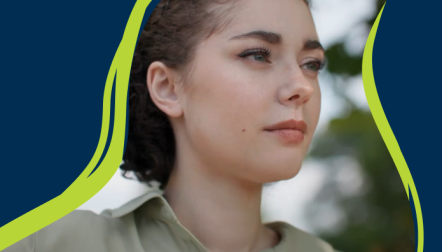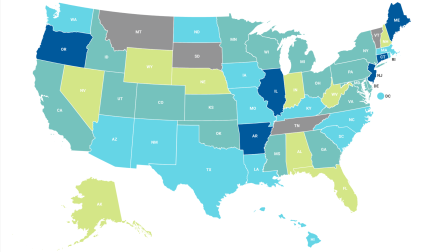
Transplant waiting list
If you need a kidney transplant, you will need to get on the national transplant waiting list for a deceased donor kidney. Learn how the waiting list works, how long people usually wait and how to choose a transplant center so you can get listed. You can take steps to stay as healthy as possible while you wait for a kidney.

What is the national transplant waiting list?
The national transplant waiting list is a list of all the people in the United States who need an organ transplant and want to be matched with an organ from a deceased donor (i.e., someone who has died). The list is managed by the United Network for Organ Sharing (UNOS), a private, nonprofit agency that works under contract with the federal government.
There are more than 100,000 people on the national transplant waiting list with the vast majority, over 92,000, waiting for a kidney.
How does the waiting list work?
UNOS is informed whenever a deceased donor organ becomes available so it can match the organ with someone on the waiting list. The UNOS computer system uses complex methods to find the best match for the donated organ. It does not simply give the organ to the person who has been listed for the longest time (although that is one of the things that the matching system considers).
Who is the best match?
The UNOS computer system considers these things about the donor and the person who gets the kidney (the recipient):
- The age of the recipient
- Blood type of the donor and recipient
- The size of the donor kidney compared to the size of the recipient's body
- How urgent it is for the recipient to get a kidney
- How long the recipient has been waiting for a kidney
- The distance of the recipient from the donor kidney
Where does UNOS look for a match?
The United States is divided into 11 regions and 58 local Organ Procurement Organizations (OPOs), which are areas that UNOS uses to find matches for a transplant. For example, when a donor kidney becomes available:
- UNOS will try to find a match nearby, in the same OPO the donor kidney is in.
- If UNOS does not find a match in that OPO, they will search for a match in the larger region.
- If they do not find a match in that region, they will offer the kidney to someone who lives outside the region.
How long do people usually wait for a deceased donor kidney transplant in the US?
Most people wait three to five years for a kidney from the national transplant waiting list in the United States. The timing for you may be shorter or longer.
How do I get on the waiting list for a kidney transplant?
To get on the national waiting list for a kidney transplant:
- Contact a transplant center (or centers) in your area. A transplant center is a hospital that performs the transplant process — from evaluating patients and putting them on the national waiting list to doing the transplant surgery. Most people start by getting a referral for transplant surgery from their doctor, but you do not need a referral to get started.
- Schedule a full health evaluation to see if you are healthy enough for surgery. You will need to visit the transplant center many times to have tests and exams.
If you pass the evaluation and the transplant team decides you are healthy enough to have transplant surgery, you will be added to the national waiting list.
How do I choose a transplant center?
You will need to choose the transplant center (or centers) where you want to be listed.
The United States has more than 250 transplant centers. Consider these points when choosing a transplant center:
- Choose a transplant center that is within 24 hours of your home. When you are on the national waiting list, you may get a call any time that a kidney match is available for you. You will need to reach the transplant center as soon as you can, usually within 24 hours. Ask each transplant center how much time they allow between the call and your arrival.
- Make sure the center accepts your insurance. Some transplant centers limit the types of insurance they will accept for transplant surgery. Ask the transplant coordinator what types they will accept.
- Find out how much experience the transplant team has. This may or may not matter to you, but consider if you want to know if the transplant center and its team are new or well-established. You can also check on the performance of U.S. transplant centers.
Consider multiple listing
To raise your chances of getting a kidney match sooner, consider getting on the national waiting list through more than one transplant center for the same organ (called multiple listing). Each transplant centeryou are listed through must be in a different OPO area so UNOS considers you for a match in each different area. Getting listed through transplant centers in the same OPO area will not raise your chances of getting a match sooner.
Keep in mind that if you get listed through more than one transplant center:
- You must be able to reach any transplant center within a short time of being called when a kidney is available for you, usually within 24 hours.
- You will need to go for health visits at all transplant centers you are listed with.
- Consider if you can afford to take long drives or book last minute airplane flights to get to transplant centers that are outside of your own OPO area.
How can I stay healthy while I wait for a kidney transplant?
Go to your health visits
- Do not miss visits with your transplant team, primary doctor and other doctors.
- If you are on dialysis, do not miss your dialysis sessions.
Stay as healthy as you can

- Let your transplant team know if you have any changes in your health, even if you feel like you just have a cold.
- Take all medicines as prescribed by your transplant team. Let the transplant team know if you are taking medicines prescribed by another doctor.
- Carefully follow the plan the transplant team gives you for eating and being active. They may ask you to see a dietitian or physical therapist.
- If you are a woman, talk to your transplant team about birth control and what you should know about having children before and after your transplant.
Keep your health information updated
- Keep all your medical papers in a folder or binder so they are in one place.
- Tell your transplant team about any changes to your contact information, especially your address or phone number.
Save lives. Support transplant.
AKF makes 6% of all kidney transplants possible in the United States. We need your help to save more lives of people facing kidney failure. Please give now.

